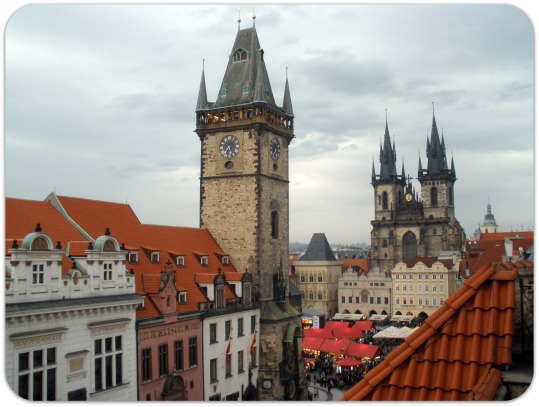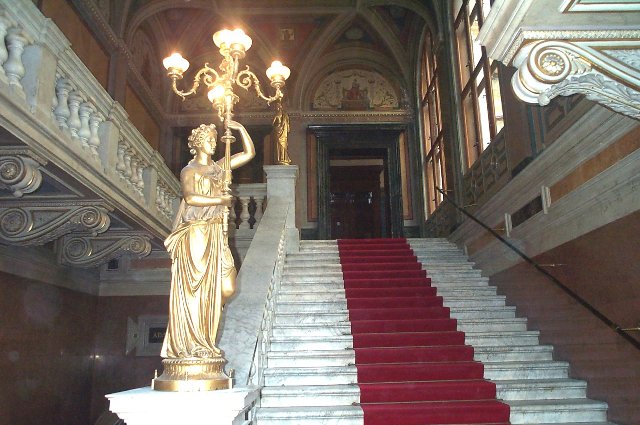Living in Prague
In this section find practical information about living in Prague and studying at a university in Prague, especially at a graduate economics program.
Visa
The MAE program will guide you through each step of the visa application process. The process can be different for students from different countries. Therefore, the description here cannot go into detail. We provide personalized assistance in obtaining a visa.
If you plan on bringing family members to Prague with you, we will help them obtain visas as well. However, since family members are not MAE students, we cannot guarantee that family members will receive a visa, or make admission/enrollment conditional on family members getting visas.
The CERGE-EI MAE Program is unique in that it is a degree program chartered by an American university run in Prague, the Czech Republic. The program will soon be officially registered with the Czech Ministry of Education as a foreign university operating a program within the Czech Republic. This is the standard registration for foreign university programs in the Czech Republic.
The registration with the Ministry of Education is the basis on which we request a visa for each student. This registration allows MAE students to have official Czech government recognition as a student. Therefore MAE students obtain a European student visa to study at the MAE program.
Getting a student visa can be a difficult process for any foreigner. CERGE-EI has a lot of experience negotiating with officials and guiding students through both the official procedure and the unwritten realities of obtaining a visa. Please be diligent in keeping in close communication with the MAE program about your visa application and doing the tasks that we cannot do for you.
Very soon after you receive your admissions offer, MAE staff will be in contact with you about applying for your visa.
Contact the program at This e-mail address is being protected from spambots. You need JavaScript enabled to view it if you have any questions or concerns about the visa procedure.
Housing
MAE students have the right to a Charles University dorm room at subsidized prices. Prices depend on the dorm, but a shared room is around 2500-3000 CZK per month and a single room is about twice that much.
A studio apartment for one person typically costs about 10,000-15,000 CZK per month.
If you share an apartment with 3 or more people, you would probably pay about 10,000 CZK per month.
As usual, apartment rents depend on many factors, especially location.
Living Expenses
Prague is a mid-range city in terms of the cost of essentials like housing, food, transportation, etc. It is much less expensive than Western European cities such as London or Paris, but probably more expensive than Eastern European cities such as Kiev or Central Asian cities such as Tashkent.
Of course, how much you spend on living essentials also depends on your personal standards, and Prague offers a wide range of spending options.
Contact the MAE program at This e-mail address is being protected from spambots. You need JavaScript enabled to view it for more detailed information on housing and living expenses.

A typical view of Prague's Old Town
Prague
Prague is a spectacular city. It has weathered more than 1000 years of turbulent history, including the Nazi and Soviet domination of this century. For forty years, the city was more or less off-limits for Western tourists, being located approximately 200 kilometers behind the "Iron Curtain." After the Velvet Revolution of 1989, the city emerged once again as the capital of a sovereign, democratic nation.
The city of Prague is a museum, filled with a rich collection of musical heritage, cultural activities, and history. There was no radical rebuilding of the city center during the industrial revolution, so the city has maintained its unique "old world "character. Whereas cities like Warsaw and Berlin offer little evidence of what they looked like in the 1750s, the urban design of Prague is not very different from what it was even in the 15th century. Prague did not suffer the damage of other European cities during World War II, leaving its medieval network of narrow cobblestone streets, gothic churches, and baroque palaces intact.
Prague is one of the best preserved medieval cities of Europe and it is often called "The City of a Hundred Spires". Prague offers a wide selection of Romanesque, Gothic, Baroque, Neo-Renaissance, Art Nouveau, Cubist and Socialist-Realist architecture. On any given evening, visitors may choose to see one of dozens of concerts, operas, or theater presentations. Museums boast world-class collections of art and host international exhibitions.
The Czech countryside has hundreds of castles, chateaux, and historic ruins. Moreover, there are thousands of kilometers of marked trails for hiking and biking through beautiful landscape to visit these historical landmarks. The dreamlike quiet of an older, slower-paced Europe lures visitors from all over the world, and studying abroad in Prague gives students the chance to develop a genuine feel for the city and its history at a leisurely pace.

The main staircase in the CERGE-EI building in the center of Prague






